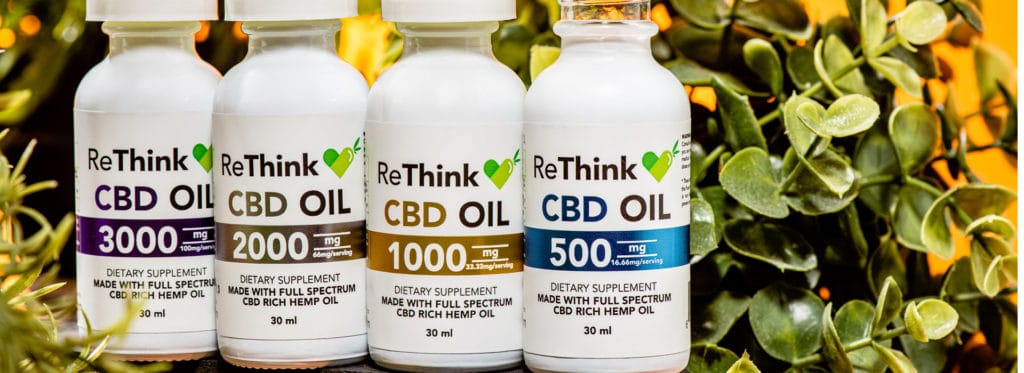Three Types of Cannabinoids You Should Know
A cannabinoid basically refers to any chemical that interacts with the cannabinoid receptors in the body and brain and produces an effect similar to the effects of Cannabis Sativa. The large and diverse group of substances known as cannabinoids can be classified in many ways.
Endocannabinoids
Animals first developed a biochemical system that controlled various important functions during the Cambrian period, about 450 million years ago. As organisms become more sophisticated and adept at their tasks, the system known as the endocannabinoid system, or ECS, developed.
In our bodies, endocannabinoids are naturally produced. These molecules are produced and stored by our bodies. As our bodies can produce endorphins, which mimic the effects of opioids such as morphine, we can also produce substances called endocannabinoids, which mimic the effects of hemp’s cannabinoids.
A variety of physiological functions are regulated by endocannabinoids, which are signaling molecules produced by the endocannabinoid system. Our ECS plays a role in relieving pain, stress, immune response, mood, memory and more. Therefore, having an adequate number of endocannabinoids is crucial.
Endocannabinoids and cannabinoid receptors make up the endocannabinoid system. The ECS plays a role in physiological processes, neurotransmitter release, pain perception, the heart, gastrointestinal tract, and liver. In humans, anandamide and 2-arachidonic acid glycerol are the most predominant endocannabinoids (2-AGs).
Endocannabinoids are molecules that act as CB1 and CB2 and are the natural key to cannabinoid receptors, causing them to activate and follow through. Neuronal processes are mediated by CB1, which is mainly found in the central nervous system. Immunomodulation is caused by CB2 in the immune system. In addition to microglia and neurons, the central nervous system is known to contain CB2 receptors.
Unlike phytocannabinoids, endocannabinoids are naturally produced by our bodies. Phytocannabinoids can also be used as an external tool to aid bodily functions. By using phytocannabinoids as tools, the body may help regulate itself. Homeostasis is the constant effort of the body to maintain perfect balance. In a way, cannabis makes it easier for the body to achieve homeostasis.
Phytocannabinoids
Cannabinoids derived from the cannabis plant are phytocannabinoids and interact with endocannabinoid receptors. Many of the phytocannabinoids in the cannabis plant have little or no psychoactive activity. This makes them more therapeutic than Delta 9-THC. CBD is an essential non high inducing phytocannabinoid.
It contains therapeutic properties, including anti-inflammatory and antioxidant effects. It has been clinically suggested to treat anxiety, stress, mobility difficulties and neuropathic pain in people with multiple sclerosis.
CBDA
CBDA does not bind to cannabinoid receptors CB1 or CB2, but it selectively inhibits COX-2 and has anti-inflammatory properties. While it may fuse some pain receptors, its role is not fully understood.
CBG
One of the properties of CBG is that it has antibacterial properties. In particular, it inhibits anandamide’s resorption by binding to the CB2 cannabinoid receptor. Furthermore, it is a ligand that is similar to vanilla.
CBC
CBC can cause mice to become hypothermic, sedated, and hypoactive. Additionally, it functions as an analgesic, an antimicrobial, and an anti-inflammatory. It is also an effective vanilloid antagonist and a relatively insignificant inhibitor of anandamide re-absorption.
How do Plants Produce Phytocannabinoids?
It is not fully understood where or how phytocannabinoid biosynthesis occurs. According to research, these are produced in special disc cells found in glandular trichomes. A resin is either directly released into the secretory cavity or is first accumulated in the nearby secretory cavity before being released.
There is no doubt that glandular trichomes are the primary sites for phytocannabinoid synthesis and storage. Most of the plant’s aerial surfaces are covered with trichomes. The majority of terpenes contain these cannabinoid-containing compounds (monoterpenes and sesquiterpenes).
Terpenes give each species a distinctive scent, depending on their quantity and composition.
Cannabis researchers have mentioned simple unicellular trichomes and natural killer trichomes as examples of non-glandular trichomes that do not produce terpenoids. The cannabis plant’s trichomes are fascinating to pharmacognosy experts.
There are three types of glandular trichomes on female cannabis plants: a bulbous trichome, a capitate-sessile trichome, and a capitate-stalked trichome. Four types of glandular trichomes have been identified in the anthers of male plants.
Female plants have more trichomes than male plants. Female inflorescence bracts make up 20 to 25 percent of the dry plant matter.
It is more likely that trichomes that have been capitate-stalked contain phytocannabinoids. Throughout the blossoming stage, the pistillate flower bract is the thickest layer of this trichome.
A considerable number of capitate-stalked trichomes can also be found on the leaves that accompany flowers. A plant’s roots are relatively rare or nonexistent when compared to its leaves and stems.
We respond to phytocannabinoids because our bodies interpret them as endocannabinoids. In terms of molecular appearance, they are almost identical. If we did not have an endocannabinoid system and the signaling molecules, CBD would have no effect.

Synthetic cannabinoids
Synthetic cannabinoids, also referred to as synthetic marijuana, K2, and Spice, are dangerous and illegal substances that have wildly variable effects on the body. Bath salts are considered novel psychoactive substances (NPSs), another name for new, designer drugs.
Synthetic cannabinoids are produced by coating plant material with synthetic psychoactive substances intended to resemble THC. These products have been sold online since 2004.
The synthetic cannabinoids, however, do not mimic the effects of THC (delta-9 tetrahydrocannabinol, the active ingredient in cannabis), and they also have some adverse effects not found in cannabis.
The terms synthetic cannabis or synthetic marijuana are therefore incorrect.
A synthetic cannabinoid receptor agonist (SCRA) is the term applicable to these substances
Synthetic cannabinoids are powdered chemicals sold in brightly colored, brand-named packets and sprayed onto herbal products after being mixed with solvents. Manufacturers typically alter chemicals from batch to batch in order to avoid legal repercussions, even if the names and branding are similar.
Effects of Mood and Environment
There are a variety of effects that synthetic cannabinoids have depending on the mood (the set) or the environment they are in (the setting).
Predetermined variables include mental state, history with psychoactive substances, and future expectations. It is possible that stress or anxiety symptoms may intensify before consuming synthetic cannabinoids.
An individual’s environment, their companions, their location, whether indoors or outdoors, as well as the music and lighting they are exposed to, influence their consumption of synthetic cannabinoids. Taking synthetic cannabinoids in a calm, quiet, and relaxed setting may result in a positive experience, whereas doing so in a busy, noisy setting may result in the opposite.

Is Delta-8 a Natural or Synthetic Cannabinoid?
Without human intervention, the naturally occurring substance delta 8 THC can be found in hemp and marijuana plants. As a result, it is not synthetic and is an entirely natural cannabinoid.
Because it only exists in trace amounts in cannabis plants and needs a procedure to produce a quantity that can be consumed, some people think it is a synthetic cannabinoid.
Cannabidiol (CBD) is legal under federal law and is typically extracted from hemp plants and then converted using acid to produce delta 8 THC.
Because hemp has a much higher CBD content than delta 8 THC, manufacturers can use this process to manufacture large amounts of delta 8 THC at a reasonable cost. It calls for a unique procedure to produce a consumable quantity.
Although the delta 8 THC production process requires human intervention to generate a large quantity of it, delta 8 THC is a non-synthetic cannabinoid that naturally exists in the cannabis plant.
Synthetic Cannabinoids and Delta-8
The main distinction between delta 8 THC and K2/Spice is that delta 8 is a naturally occurring cannabinoid, whereas K2 and Spice are synthetic and do not occur naturally in cannabis plants at any stage.
The classical cannabinoids, delta 8 THC, delta 9 THC, delta 10 THC, CBN, CBD, and the rest—all have very similar chemical structures and are collectively referred to as such.
The non-classical cannabinoids in K2, Spice and other synthetic cannabinoids have chemical structures distinct from those of traditional cannabinoids like CBD and THC.
Legality is a distinction as well. With only a few minor restrictions, delta 8 THC is legal in most states and on the federal level. On the other hand, K2, Spice, and other synthetic cannabinoids are prohibited in most nations and the United States for possession, use, and sale.





